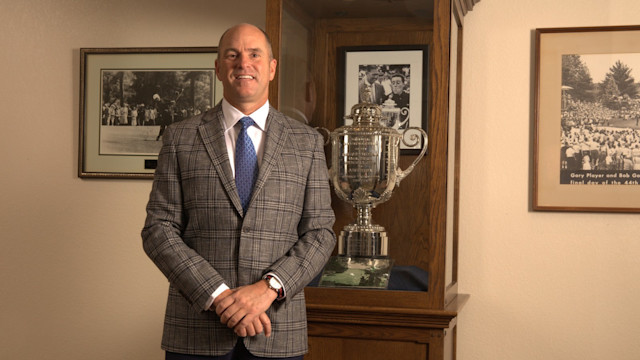Game Changers
"It's About People" : How Susie Redman-Kirk, PGA, is Helping Juniors Learn to Love Golf
By Roger Graves
Published on

After qualifying for the LPGA Tour at age 18, Susie Redman-Kirk constructed an impressive career as a tour professional, amassing 18 career Top 10s while competing in 42 majors, 434 LPGA events and another 88 worldwide tournaments in 29 countries during 20-plus years. But even more impressive is Redman-Kirk’s recent record of accomplishments in the youth player development space.
When she retired from the LPGA Tour 16 years ago, Redman-Kirk directed most of her golf energy toward teaching kids. But she wasn’t content to just teach them how to grip a club or hit a ball.
She immersed herself in reading and researching everything she could find regarding childhood development, physical literacy, social-emotional learning and trauma-informed coaching. As a member of the PGA of America Player Development Committee, she has become an expert in youth player development and served as a consultant in the development of the American Development Model (ADM) for the U.S. Olympic Committee and all sports, and for the PGA Coach platform.
“For 20 years, I basically served as an ambassador for the LPGA Tour, my community (Mobile, Alabama), and my sponsors such as Target Stores while traveling the world and experiencing golf from a player’s perspective,” observes Redman-Kirk, the mother of four boys – John, Ben, Jesse and Jay.
“Now, I see myself as an ambassador for youth player development (YPD),” says Redman-Kirk. “My role has changed, but I’m still promoting the game and growing the game by helping children discover that golf is an enjoyable experience. It’s a new challenge for me, but it’s such a natural fit. I know what these youngsters are going through because I was in their shoes when I was younger.”
Redman-Kirk, the recipient of the 2023 PGA Youth Player Development Award, has a simple philosophy regarding youth development – “Making a difference one youth, one swing at a time.”
“Youth player development is not about programs; it is about people,” maintains Redman-Kirk. “Obtaining the ability to build strong interpersonal relationships with a commitment to golf and maintaining high standards of excellence is the foundation of YPD. Building trust with people and ‘paying it forward’ is who I am. As we teach young people, it is important that we get to know who they are and provide an enjoyable experience.
“We always need to be positive, using positive language and actions. I like to emphasize what they have accomplished, not what they didn’t. If they have an enjoyable experience, they will want to come back again and again.”
Susie Redman-Kirk, PGA
Redman-Kirk, a PGA Member for 23 years and an LPGA Life Member for 38 years, learned the game from her PGA Professional father, Robert Pager, and was the 1984 AJGA National Player of the Year. She had accepted a scholarship to play at UCLA, but qualified for the LPGA Tour instead, and immediately began her professional career. She believes teaching youths has evolved considerably since the days she would hit balls daily at her father’s course in Mobile.
“The American Development Model and PGA Coach platforms have given us proven guidelines and a proven curriculum for connecting with today’s young players,” notes Redman-Kirk, who has established a highly popular program for youths at The Woodlands Country Club near Houston, Texas, while her husband, 2019 PGA Teacher & Coach of the Year Kevin Kirk, teaches adults and tour players.

Redman-Kirk lends her expertise to numerous Youth Development programs, including the Southern Texas PGA’s Little Linksters/Pathway program, PGA Jr. League, PGA Coach, Positive Coaching Alliance, Aspen Institute, U.S. Kids Golf and the Global Physical Literacy group.
“Youth development in the area of teaching golf is more structured and scientific than it was 20 years ago,” says Redman-Kirk. “We have learned a lot about physical literacy and childhood development.
“One thing we must always keep in mind is that each child is unique and may respond to different things. It is our job as golf teachers and coaches to identify what each child needs.”



